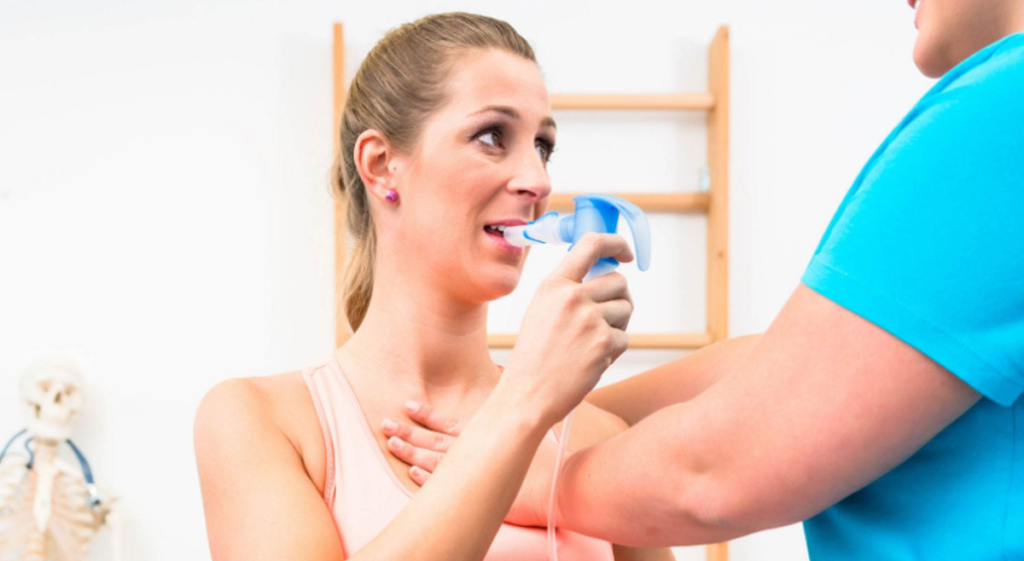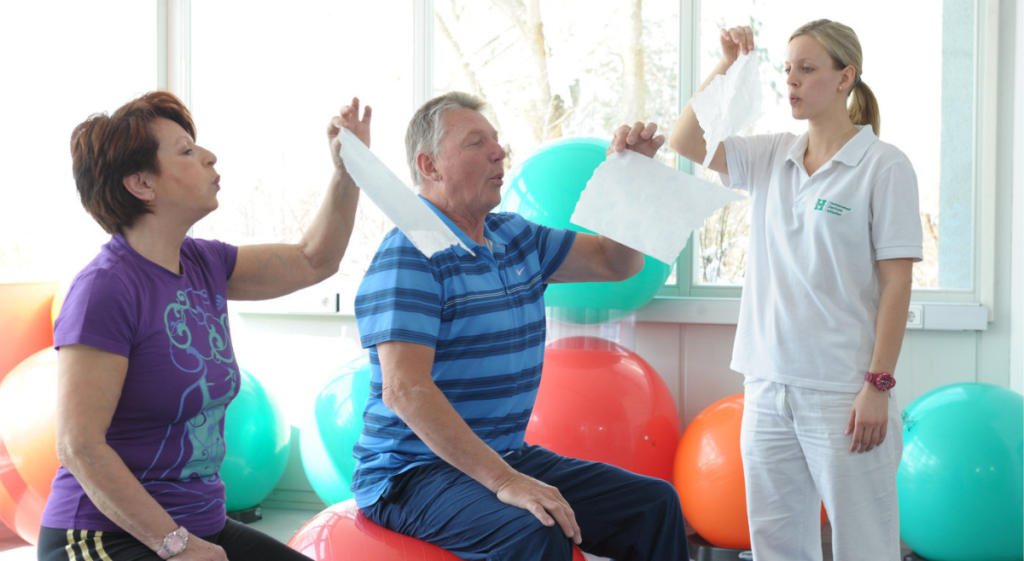Living with a chronic lung condition, such as chronic obstructive pulmonary disease (COPD), can impact even simple, everyday tasks. Climbing stairs can be difficult, short walks can cause fatigue, and respiratory infections and coughs can take a toll on both physical and mental health. However, pulmonary rehabilitation can help improve the quality of life. This formal program is designed to increase strength, build stamina, and boost lung capacity, with a team of experts including doctors, nurses, respiratory therapists, and nutritionists creating a customized plan to guide patients through exercises and therapies that allow for a more comfortable and independent life. Continue reading the blog to get an in-depth understanding of pulmonary rehabilitation and its benefits.
What is Pulmonary Rehabilitation?
Pulmonary rehabilitation for COPD is a specialized program designed to help people with chronic lung conditions, such as chronic obstructive pulmonary disease (COPD), improve their breathing and quality of life. The program typically includes a combination of exercise training, education on managing symptoms, and counseling on nutrition and mental health. It is a multidisciplinary approach tailored to each individual’s needs and may involve a team of healthcare professionals, including physicians, nurses, respiratory therapists, and nutritionists. The goal of pulmonary rehabilitation is to help individuals with chronic lung conditions become more active, manage their symptoms, and improve their overall health and well-being.
Benefits of Pulmonary Rehabilitation
The several benefits of completing a pulmo rehab program, include:
Breathe Easier:
One key advantage of pulmonary rehabilitation is enhanced respiratory ability. Though it cannot restore lung function, the program can teach you how to manage your symptoms with medication and breathing methods, which can elevate your oxygen levels and alleviate discomfort. Numerous participants in these programs have reported a reduction in wheezing and breathlessness.
Build Endurance:
Pulmonary rehabilitation programs focus on exercise as an essential component. The combination of strength training and light cardio can encourage the heart and lungs to work more efficiently, and participants can learn exercise modifications to make them more accessible. Establishing an exercise routine during the program can help individuals continue with it after completion.

Establishing a Nutritious Dietary Routine
In addition to Pulmonary rehab exercises, the program also focuses on nutrition and dietary guidance. Nutritionists or dieticians are often part of the team and can provide counseling on meal planning, healthy food choices, and maintaining a healthy weight to support overall well-being and strength.
Take Care of Your Mental Well-being
Chronic lung diseases can increase the risk of mental health conditions, such as anxiety and depression. Pulmonary rehabilitation equipment can help alleviate emotional stress by improving breathing ability. Moreover, many rehab programs provide mental health counseling for patients who need it.
Gain Valuable Insights
Participating in educational sessions is an integral part of a pulmonary rehabilitation program. These sessions are designed to provide you with information about your lung condition, body, and medications. You’ll learn how to recognize symptoms, handle flare-ups, and when to seek assistance. If you smoke, you’ll receive guidance on how to quit.
Reduce the Need for Hospitalization
The International Journal of COPD published a study indicating that individuals who completed a successful pulmonary rehab program saw a 54% decrease in the number of days they spent in the hospital compared to the previous year. Furthermore, patients who continued to maintain the strategies learned during the program, including regular exercise, were able to decrease their overall healthcare costs and avoid hospitalization.
Combat Isolation and Loneliness
Participating in a pulmonary rehab program can provide you with emotional and social support by connecting you with other patients and care providers who understand your experience with a chronic lung condition and can offer empathy and encouragement.
Who Needs Pulmonary Rehabilitation?
Pulmonary rehabilitation can benefit a wide range of people with lung conditions, both chronic and acute, chronic obstructive pulmonary disease (COPD), asthma, cystic fibrosis, bronchiectasis, pulmonary fibrosis, lung cancer, and those recovering from acute respiratory illnesses such as pneumonia.
People with these conditions often experience symptoms such as shortness of breath, wheezing, coughing, and chest tightness which can limit their ability to perform daily activities and can significantly reduce their quality of life. Pulmonary rehabilitation is suitable for people of all ages, from children to seniors, and can be tailored to each individual’s needs and goals.
Conclusion
Sukino Healthcare provides pulmonary rehabilitation and respiratory therapy services that cater to individuals with a range of breathing difficulties, including chronic lung conditions such as COPD or asthma, as well as acute conditions such as bronchitis or pneumonia. At our five-star skilled nursing facility, our highly trained staff develops personalized Pulmonary rehabilitation guidelines that can help you achieve greater independence and enhance your quality of life by improving your lung function.
Frequently Asked Questions
1. How does pulmonary rehabilitation work?
Pulmonary rehabilitation is a program that involves exercise training, education, and counseling to help people with lung diseases improve their breathing ability, manage symptoms, gain knowledge, and enhance their quality of life.
2. Can pulmonary rehabilitation improve lung function?
While pulmonary rehabilitation cannot cure lung diseases, it can improve lung function by increasing lung capacity, reducing shortness of breath, and improving oxygenation. It can also help patients manage their symptoms and reduce the frequency and severity of exacerbations.
3. Can pulmonary rehabilitation improve the quality of life for people with lung diseases?
Yes, pulmonary rehabilitation can improve the quality of life for people with lung diseases. Pulmonary rehab programs are designed to help individuals manage their symptoms, improve their breathing ability, increase their strength and stamina, and provide education and support. By participating in pulmonary rehab, individuals can experience improvements in their physical, emotional, and social well-being, ultimately leading to an overall improved quality of life.
We are India’s first comprehensive continuum care provider. We provide multidisciplinary out of hospital care to acute and post-acute and chronically ill patients at our critical care facilities and your home.

